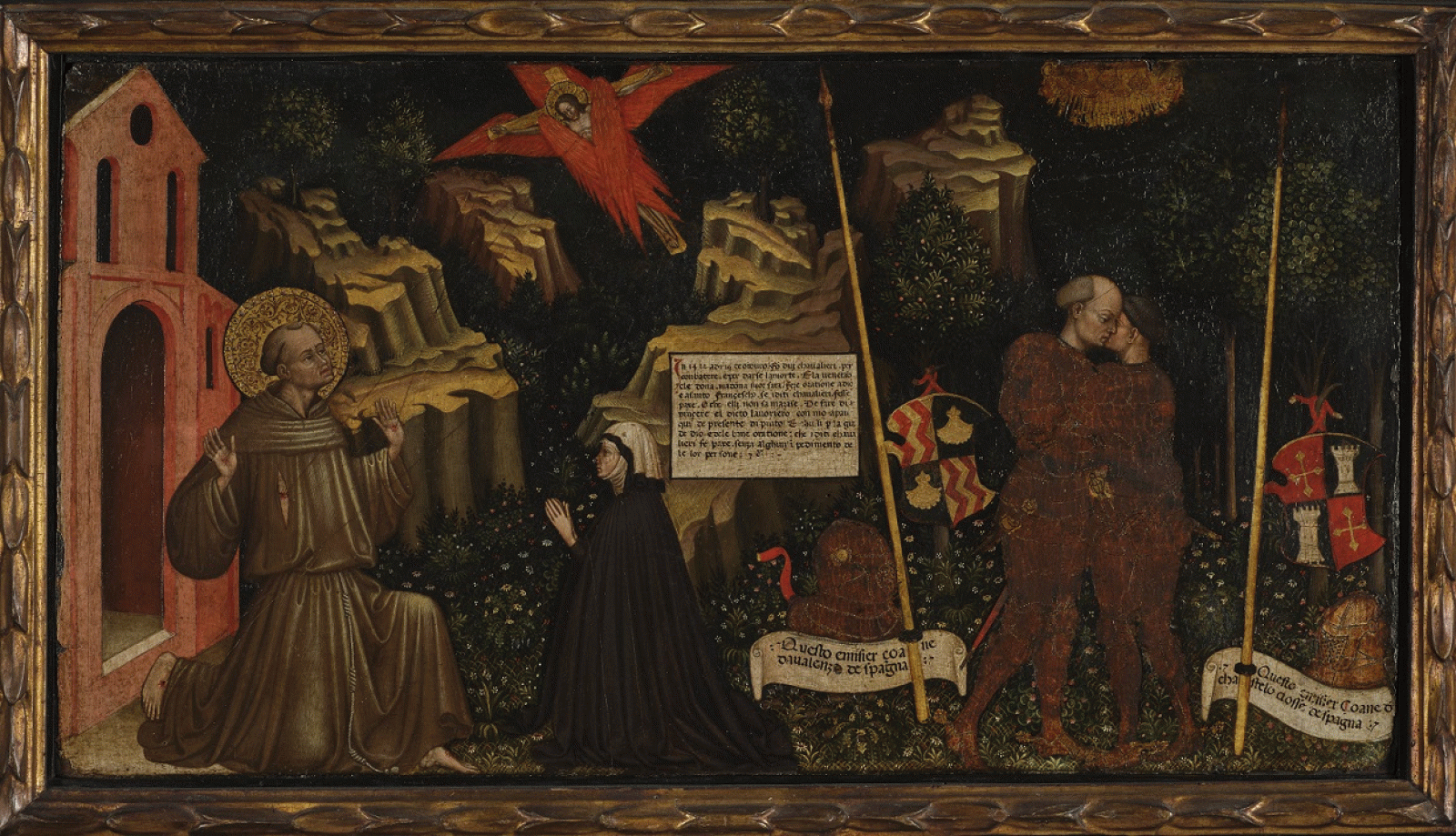KHI 2021+ Lecture Series
Ittai Weinryb:
More than This

Attributed to Antonio Orsini. Ex-voto to Saint Francis of Assissi, October 14, 1432. Tempera on panel. Musée des Arts Décoratifs, Paris, PE 84
Aby Warburg distilled the ambivalence of the "observing man" into a fluctuation between "the visual assertion of mythological causes and the numerical assertion of calculable causes." The painted figure of a constellation, for example, might both "demand veneration in magical praxis" and serve as "a distant, objective delimitation of the sparkling entities of outer space." Indeed most scholars today think of causality as a category belonging to the human world, both in social-historical approaches to commission and patronage, or in more anthropologically-inflected accounts of the magic or agentive abilities of art to affect people. Cause and effect suggest an ever-connected, determined, world. A painted panel made in Ferrara in 1432, now in the Musée des Arts Décoratifs, Paris, marks a heightened moment of causality and, as such, a point of departure to discuss the painted, living, and acting networks in the history of panel painting. Two men embracing, about to kiss. A nun kneeling. A handwritten text. St. Francis in Ecstasy in front of a Church. All of these create causal relations with one another and with the world around them. This paper is set to examine how causality, as a manner of thinking about this painted panel, harbors multiple implications that cannot be reduced to a positivist enumeration of its details. That is, simply put, more than this.
Ittai Weinryb is an Associate Professor and Director of Doctoral Studies at the Bard Graduate Center. He is the co-editor of the journal W86th (University of Chicago Press), and the co-founder (together with Caroline Fowler and Princeton University Press) of the book series Art/Work which is set to narrate a new history of art founded in the study of objects, materials, and technology. He is the author of The Bronze Object in the Middle Ages (2016) and the curator of the exhibition Agents of Faith: Votive Objects in Time and Place (2018). His forthcoming book, Kunst der Bekehrung (2022), deals with art, conversion, and deforestation in northeastern Europe. Weinryb is currently completing a study on art and material culture circulating in the Black Sea region, 13th-15th century. Another monograph, which centers on the sentiment of Hope as a category of artistic creativity, is currently in development. Weinryb was a doctoral fellow at the Kunsthistorisches Institut in Florenz – Max-Planck-Institut in 2008-2009.
This talk is part of the KHI 2021+ Lecture Series, organized by the doctoral and postdoctoral fellows, in collaboration with scientific staff and senior scholars of the Institute. It is envisioned as a forum to reflect on the futures of Art History through conversations with innovative voices in the discipline, working in different areas but sharing methodological concerns.
06. September 2021, 15:00 Uhr
KHI 2021+ Lecture Series
The event takes place online.
Hinweis
Diese Veranstaltung wird durch Fotografien und/oder Videoaufnahmen dokumentiert. Falls es nicht Ihre Zustimmung findet, dass das Kunsthistorische Institut in Florenz Aufnahmen, auf denen Sie erkennbar abgebildet sein könnten, für die Veranstaltungsdokumentation und Öffentlichkeitsarbeit (z.B. Social Media) verwendet, bitten wir um eine entsprechende Rückmeldung.


